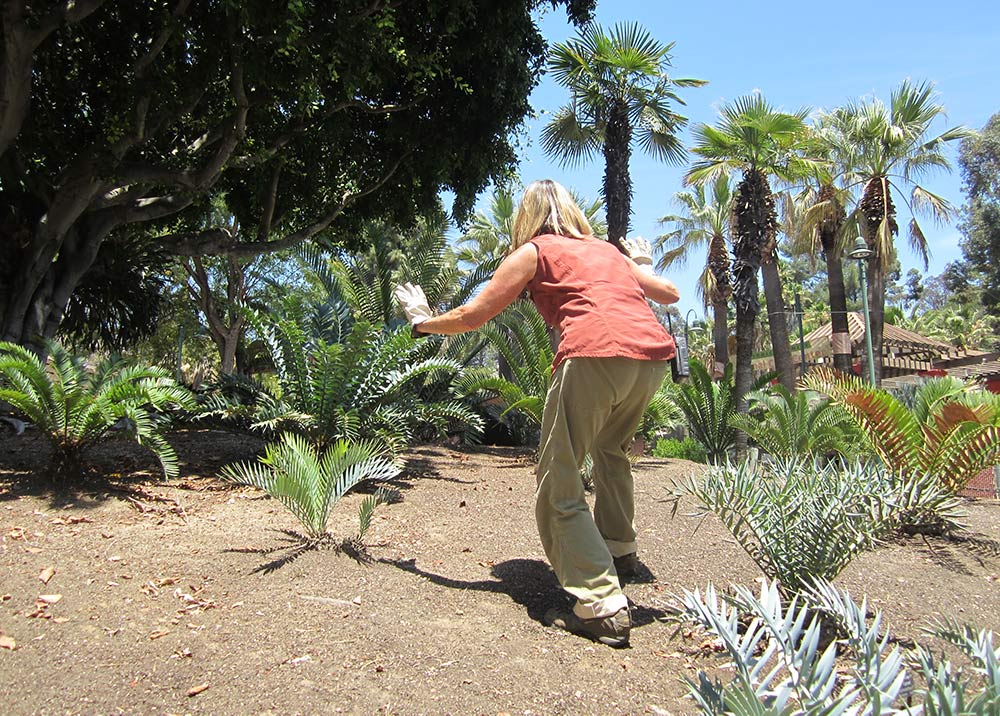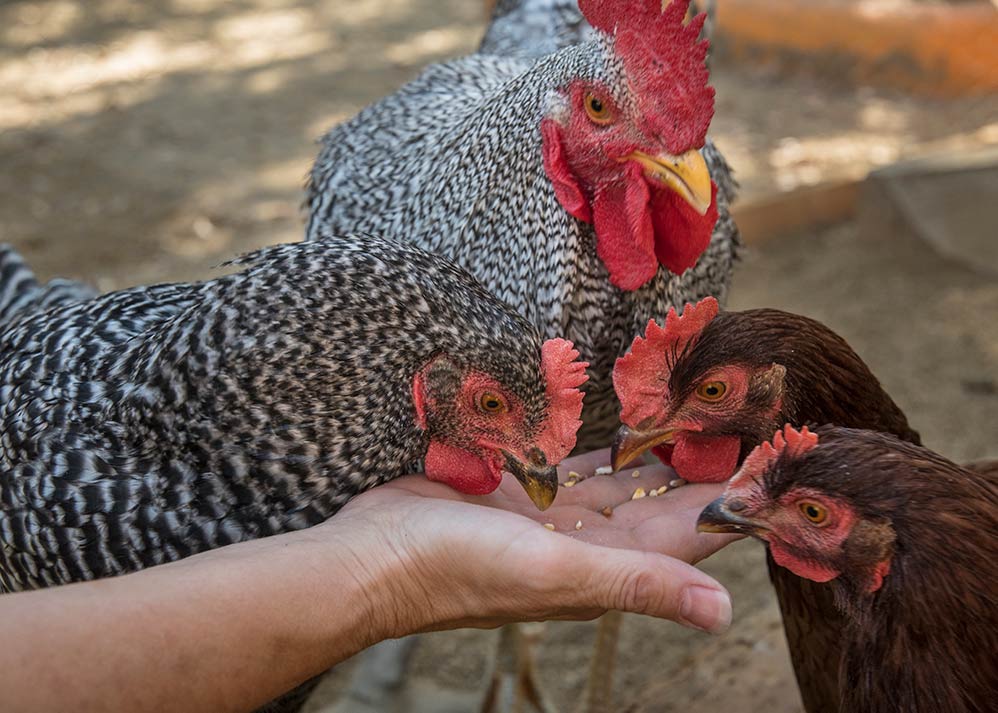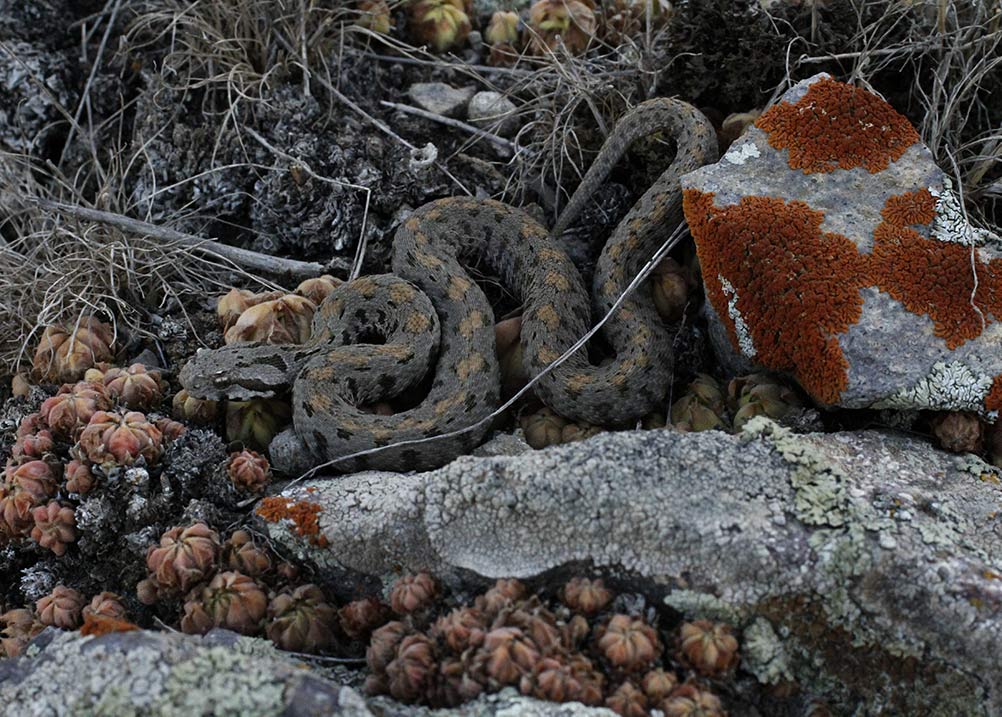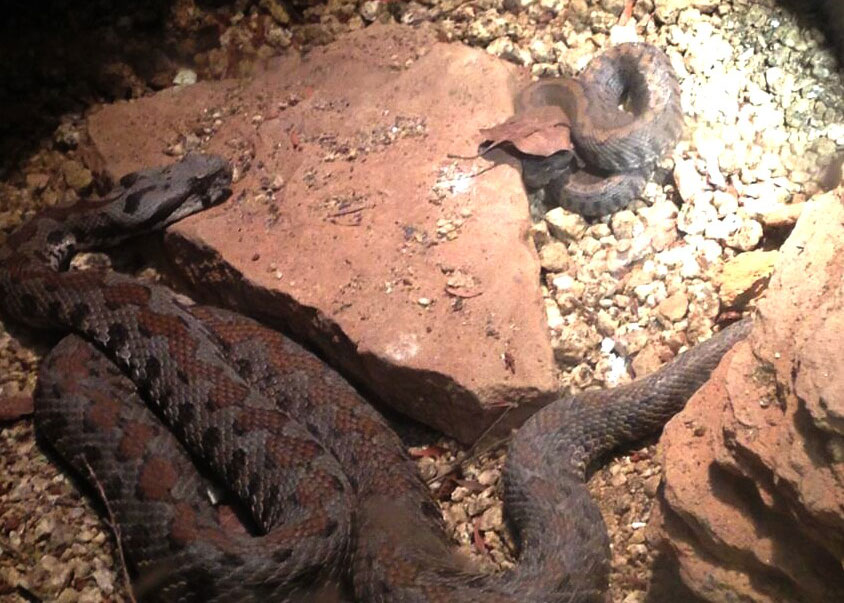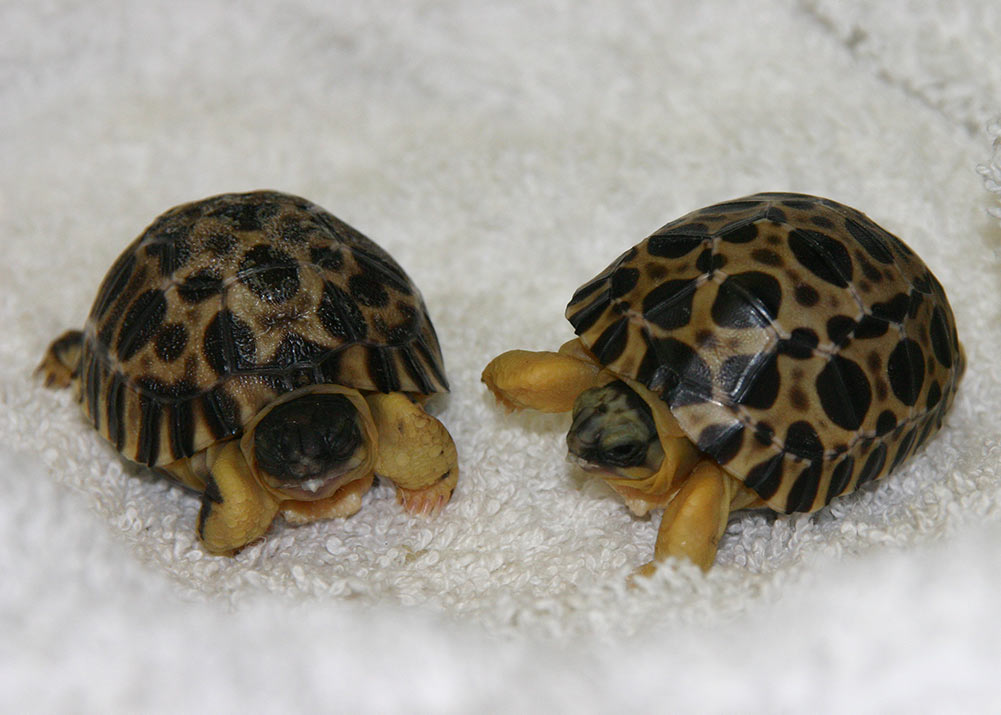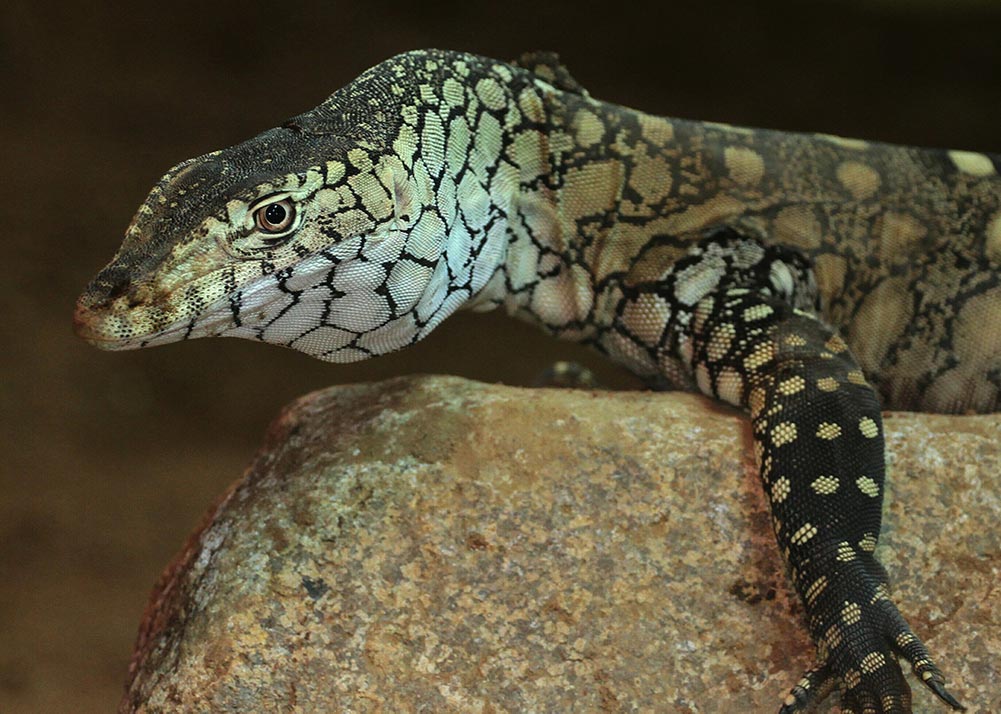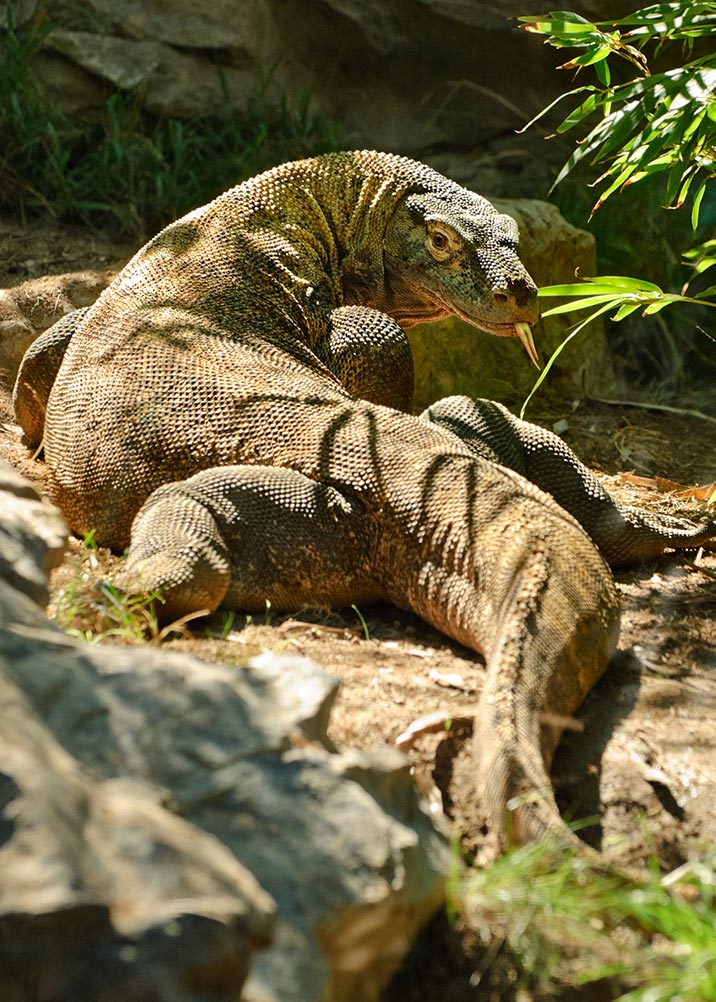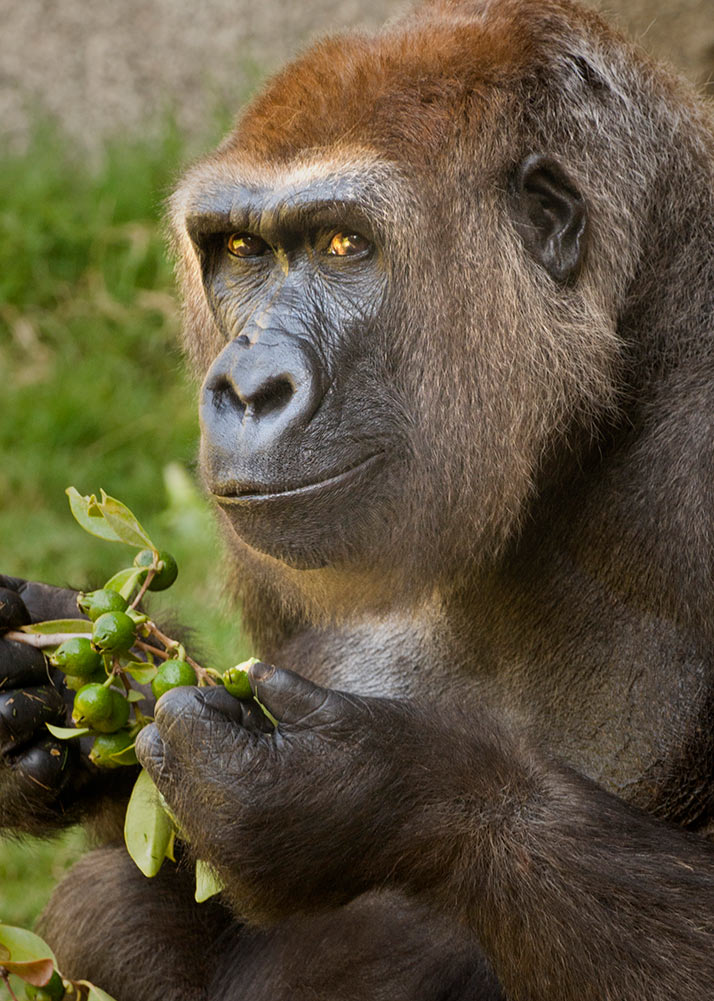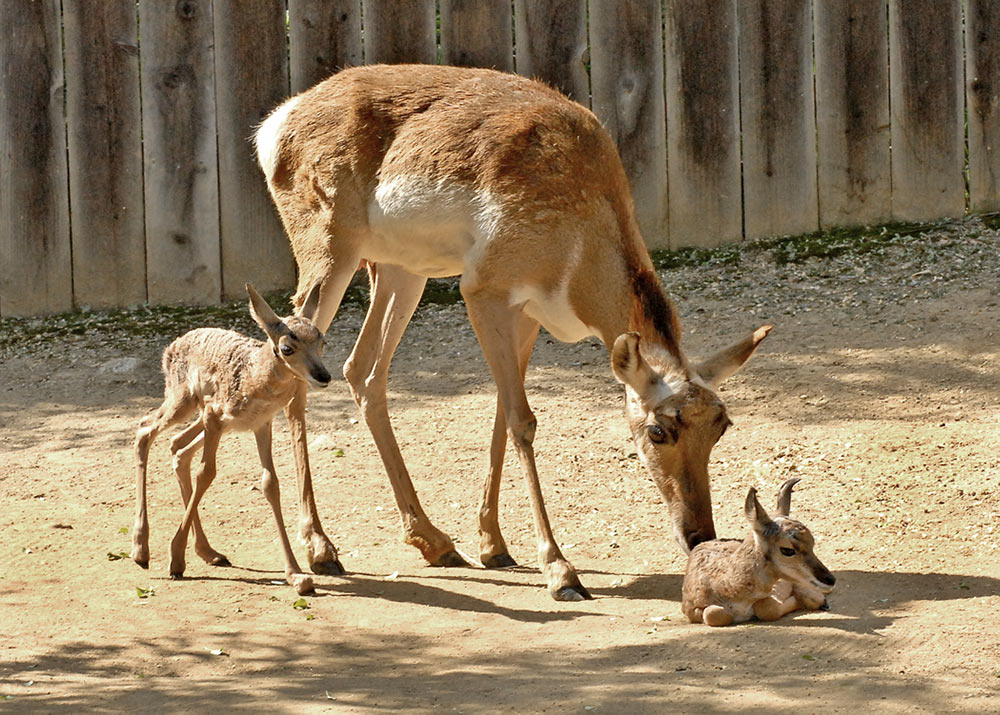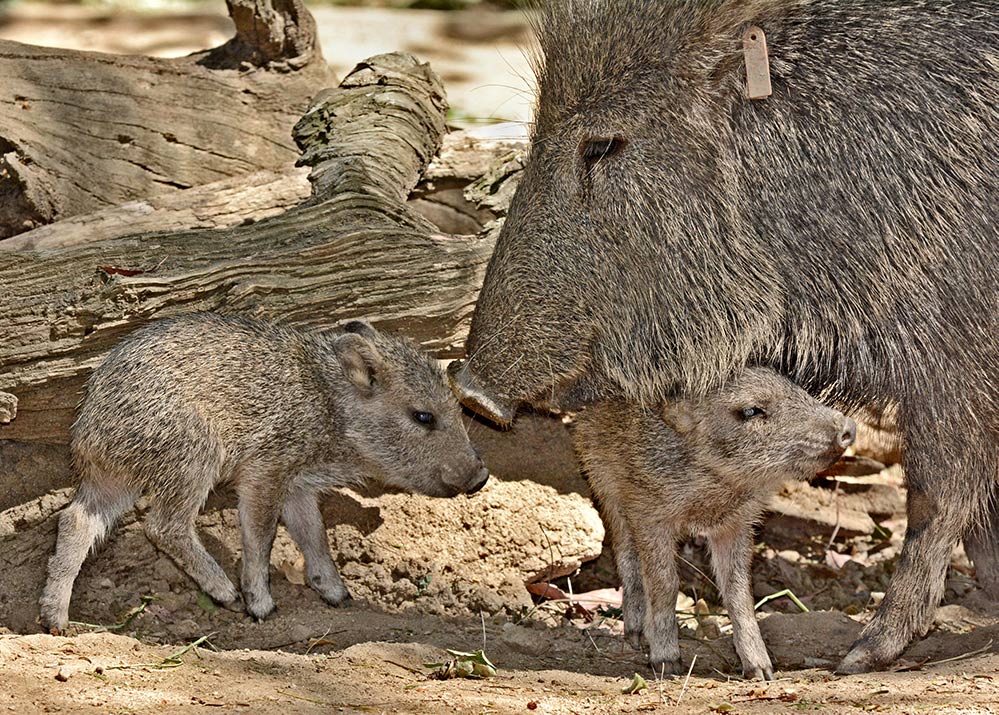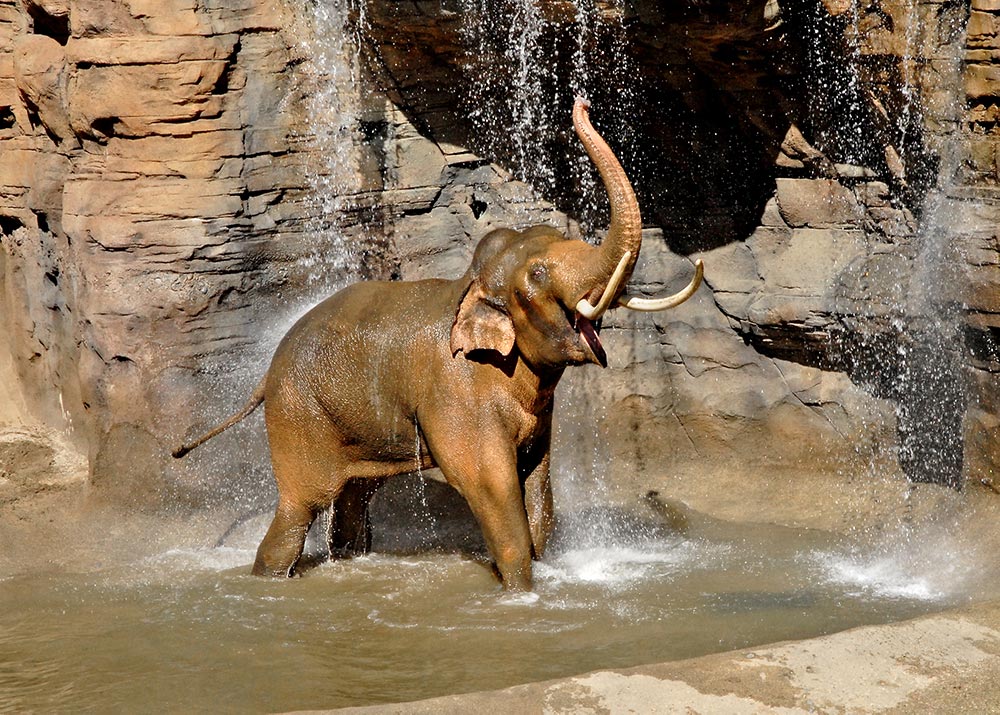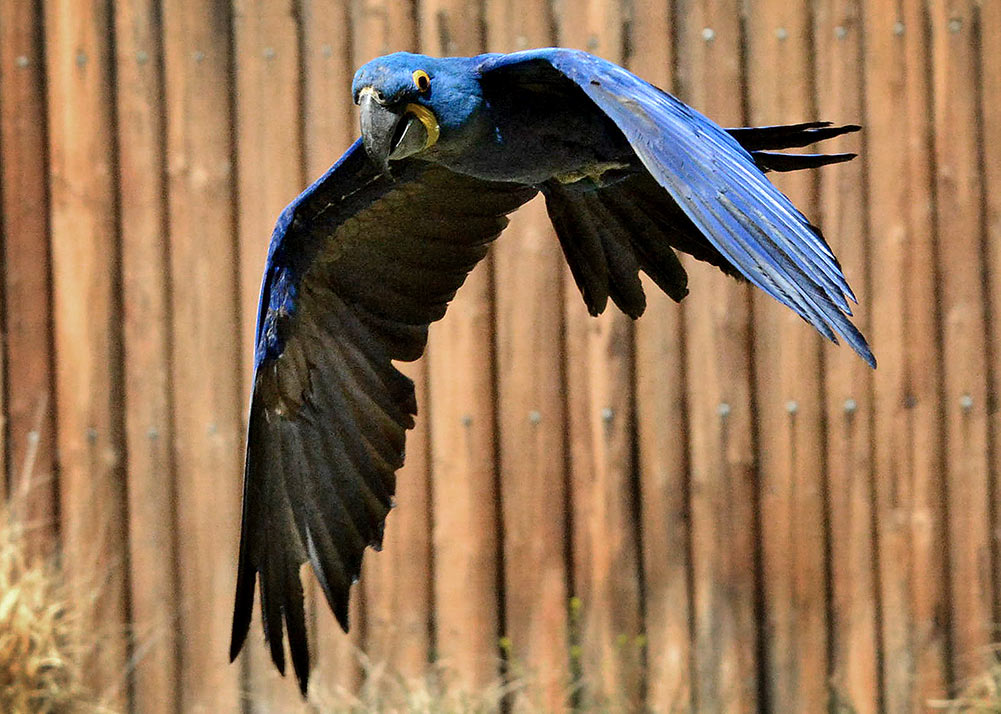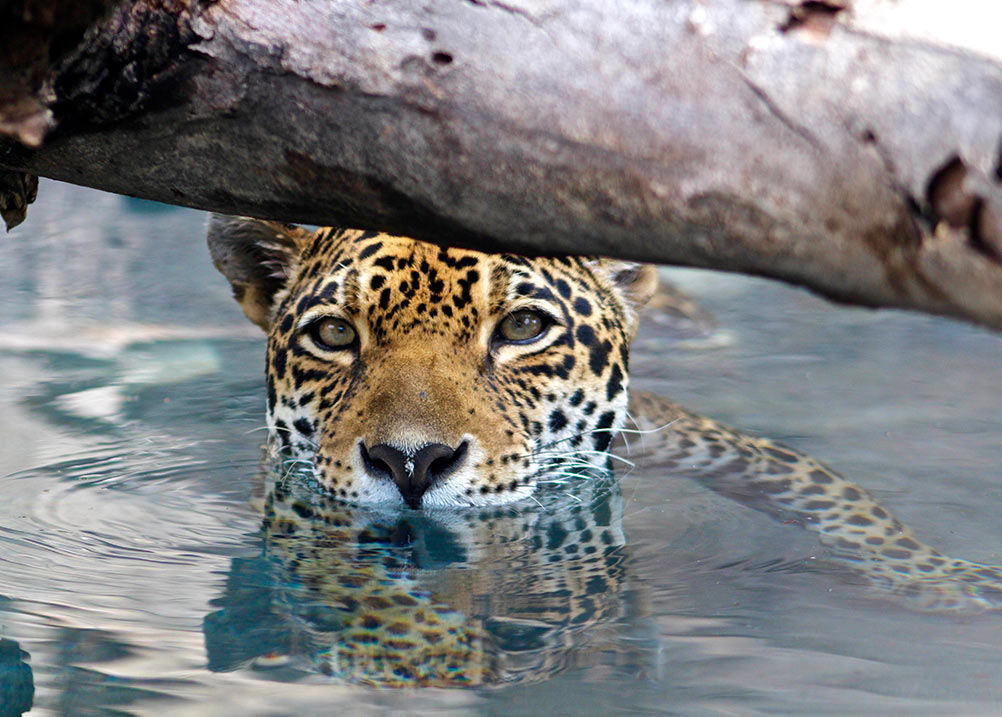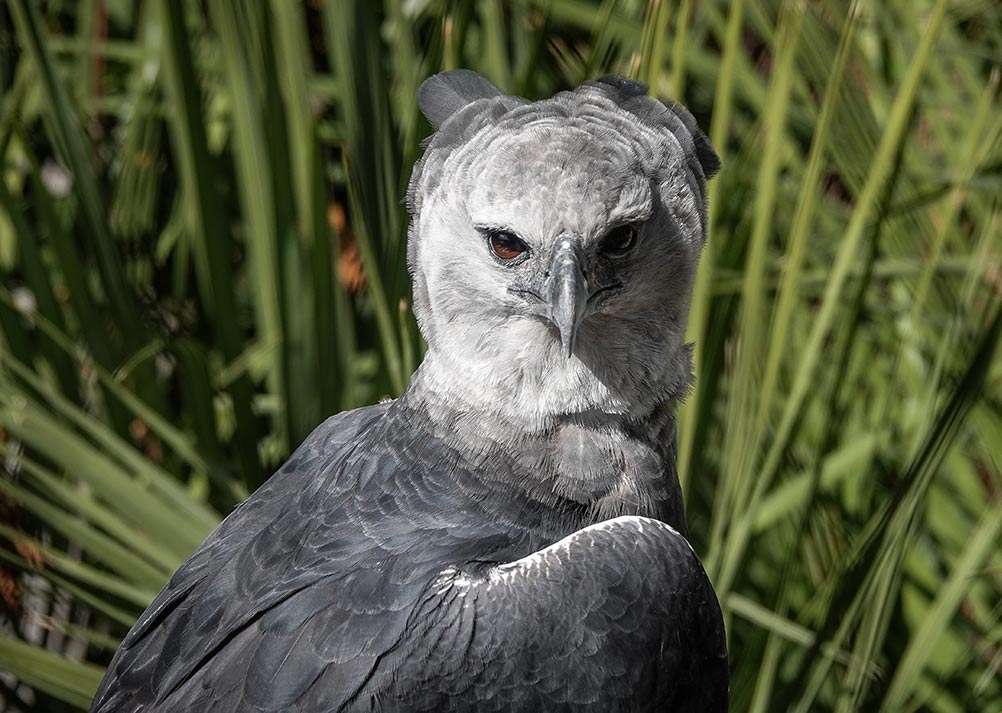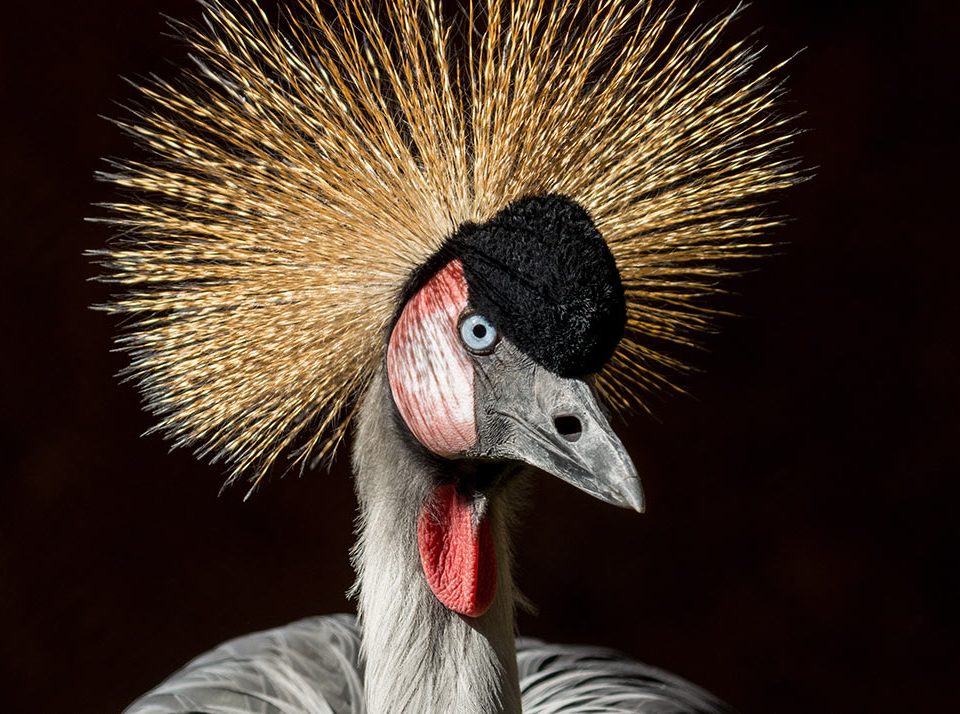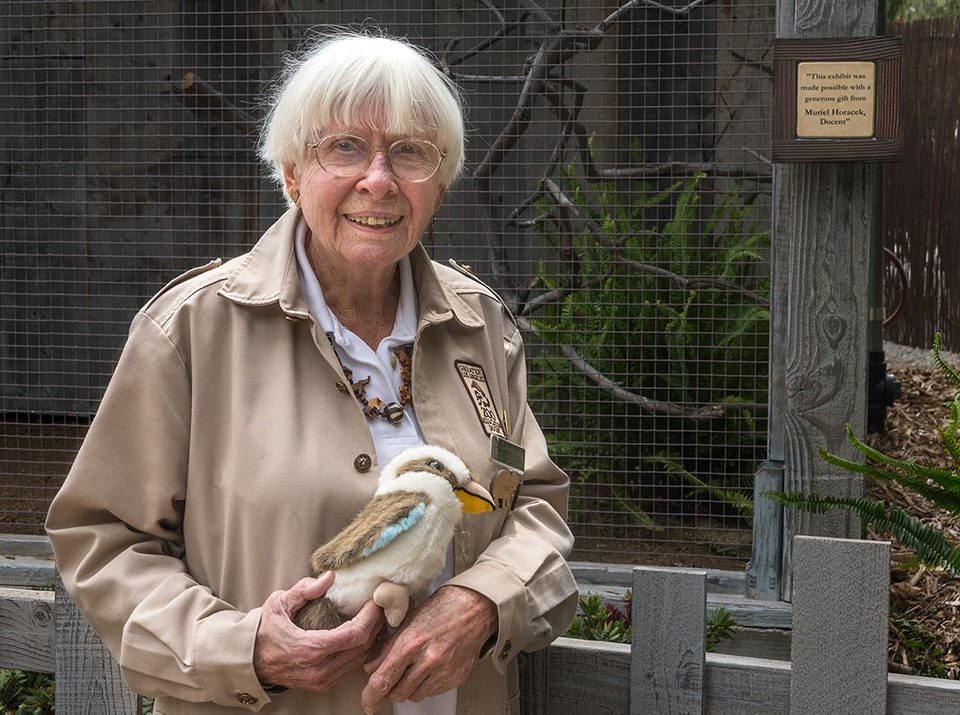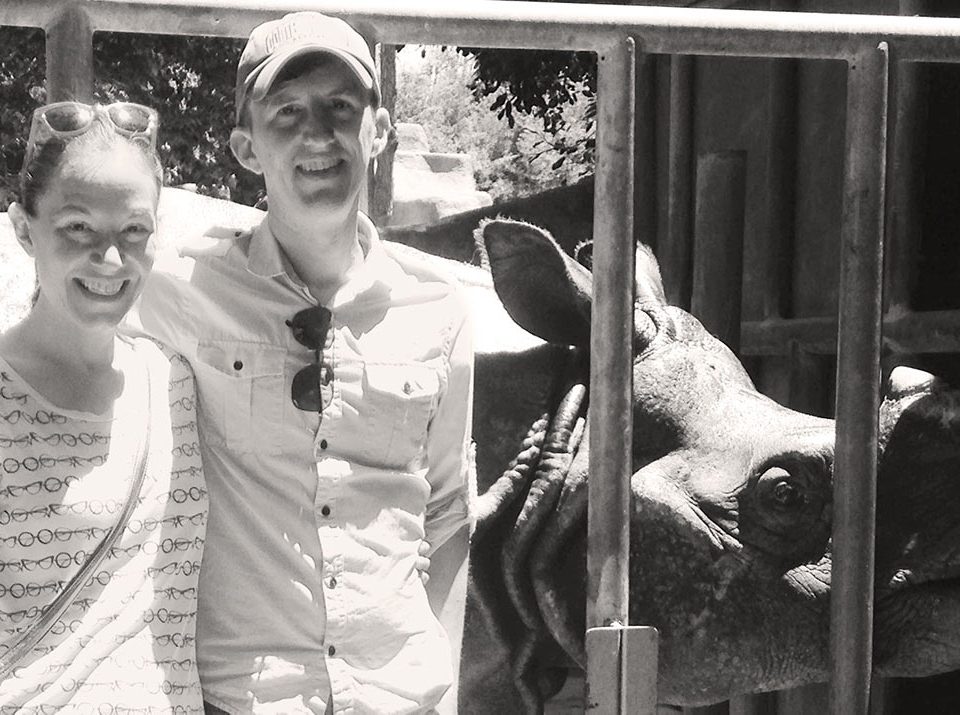Explore: Threatened Species

Donor Focus: Muriel Horacek
May 1, 2018
Zoo Update
May 1, 2018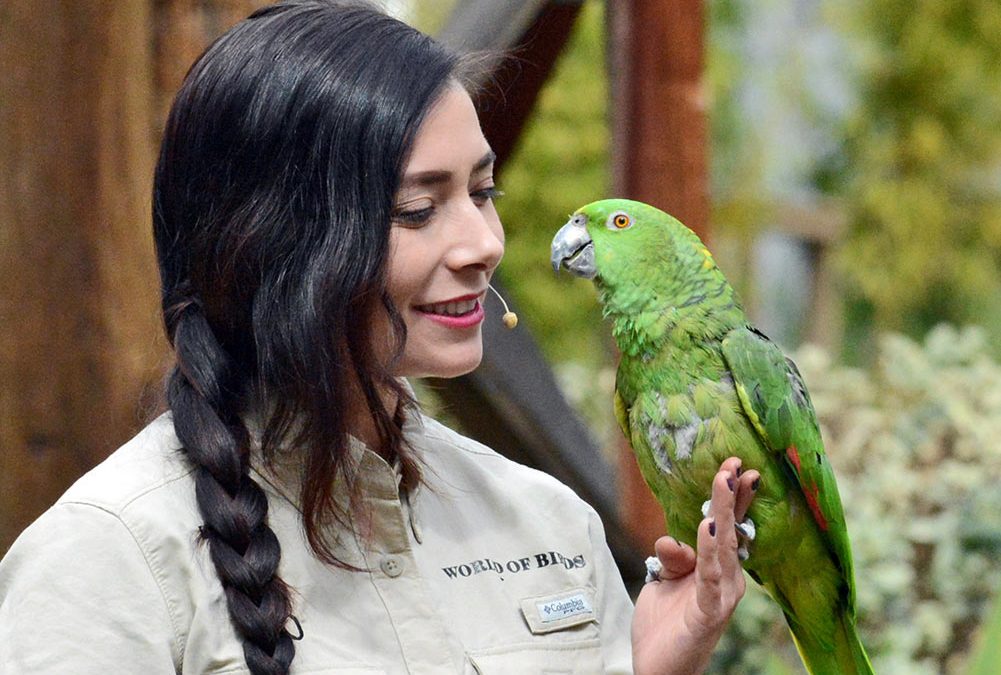
Animal Keeper Cortney Vargas and Nipper Photo by Tad Motoyama
Just by being a member of the Greater Los Angeles Zoo Association, you’re supporting efforts to save endangered and threatened species around the globe. Your hometown zoo is a conservation leader that commits expertise, technology, and funds to help save species every day—like the ones you’ll see if you follow this pathway through the Zoo. As you enjoy this tour, know that your contribution to this important work is greatly appreciated, and take the time to think about additional ways you can help wildlife and the planet.
As you begin your journey through the Zoo, take some time to stop at the garden in front of Zoo Grill—you know the one, it’s got dinosaur sculptures and a sundial with a rabbit on it. The stout, prickly plants in this garden are from an ancient group of plants called cycads. These plants are protected under the Endangered Species Act, regulating international trade to protect shrinking populations in the wild. Because they are found in threatened habitats, and they grow and reproduce slowly, it takes a lot of cooperation to reduce the pressure on wild cycad populations.
Take a trip into the Winnick Family Children’s Zoo, and in a coop adjacent to the Muriel’s Ranch contact yard, you’ll see a colorful array of hens. That’s right—even domestic animals can be considered threatened populations! The Zoo’s collection features three heritage poultry breeds: Plymouth Rock, Rhode Island Red, and Buff Orpington. Because only a few breeds are common in commercial farming, others are disappearing. Organizations like the Livestock Conservancy work to preserve genetic diversity in livestock.
Continue on to the LAIR and you’ll find many rare animals. Armenian viper populations have declined by 80 percent since 1975—largely the result of habitat destruction and over-collection for the exotic pet trade. The L.A. Zoo participates in the Association of Zoos and Aquariums’ Species Survival Program (SSP) for this pit viper, which is notoriously difficult to reproduce in human care. In July 2015, two female Armenian vipers gave birth to a total of eight babies—a first for the L.A. Zoo. Since then, three additional litters have been born at the Zoo.
Between the two buildings of the LAIR, visit the Madagascar radiated tortoise, critically endangered thanks to the illegal pet trade. Without concerted intervention, these beautiful reptiles may be extinct within 50 years. In 2016, the Turtle Survival Alliance (TSA) opened the Tortoise Conservation Center (TCC) in Madagascar. The TCC will serve as a central hub for the TSA’s Confiscation to Reintroduction Strategy, in which confiscated tortoises will be treated and returned to health, and then reintroduced into secure community-protected habitats.
When your trip takes you to the Australia section of the Zoo to see the new kookaburra exhibit or marsupial joeys, don’t forget to stop in the reptile roundhouse to visit the Australian monitor lizards called perenties and the Komodo dragons. Although dragon populations are fairly stable, the world’s largest lizards are found only on a tiny group of Indonesian islands. Habitat loss, natural disasters, and rising sea levels due to climate change are potential threats. The Komodo Survival Program, supported by the L.A. Zoo, monitors wild Komodo populations and encourages local communities to find sustainable practices that help humans and dragons to share their habitat.
After a stop for a churro sundae, be sure to visit our troop of Critically Endangered western lowland gorillas. A major threat to wild gorilla populations—and the species with which they share a home, such as okapi—is habitat loss due to unsustainable mining for minerals used in consumer electronics. In addition to supporting the Gorilla Rehabilitation and Conservation Education Center (GRACE), focused on eastern lowland or Grauer’s gorillas, the Zoo participates in environmentally friendly electronics recycling through a company called Eco-Cell.
Continuing past the (endangered) Grevy’s zebras, spend some time with the critically endangered peninsular pronghorn. Once numbering in the thousands, fewer than 30 remain in the wild. The Peninsular Pronghorn Recovery Project, established in 2000, maintains captive breeding centers in Baja California, Mexico and coordinates insurance populations at the L.A. Zoo and other U.S. institutions. Although still fewer than they once were, peninsular pronghorn have been reintroduced to parts of their historic range where they had not been seen for decades. Every birth of an endangered animal is a success for conservation efforts, and you can enjoy watching the pronghorn fawns frolic in the hoofsteps of the adults.
If you want to see more newborn animals, the Chacoan peccaries have recently added two tiny youngsters to their brood. This pig-like animal is found only in a small region of Paraguay known as the Chaco. Hunting and habitat loss due to ranching and agriculture have led to the peccary’s disappearance from large areas of its range, rendering the species Endangered. The Chaco Center for Conservation and Research (CCCI) works to restore parts of Chacoan peccary habitat and studies remaining wild populations, with the support of your L.A. Zoo.
Endangered Asian elephants face many threats, including poachers, habitat loss and degradation, and conflict with humans. Your membership helps us contribute to The Biodiversity and Elephant Conservation Trust (BECT) and the Cambodian Elephant Conservation Group (CECG), which are working to protect Asian elephants and their habitat. They study the remaining wild populations and find non-lethal ways for farmers to protect their crops from hungry elephants.
As you make your way towards the top of the Zoo, you’ll come across two can’t-miss exhibits: the Sichuan takin and their adorable newborn calves, and the unmistakable whooping call of the siamangs. Sharing a roundhouse exhibit with these vocal apes are the eye-catching wrinkled hornbills, whose populations are in decline due to logging and hunting. Some indigenous peoples in its native Southeast Asia consider it to be the chief of all worldly birds.
Can’t get enough of the Zoo’s winged wonders? Don’t miss the free-flight World of Birds Show, which features a rotating cast of more than 20 different species—some Endangered—from throughout the world. Weather permitting; our Bird Show is live daily (except Tuesdays) at 12 p.m. and 2:30 p.m.
Just across from the World of Birds Theater, sometimes hiding in tall grass, is the magnificent jaguar. Classified by the IUCN as a “Near Threatened” species, habitat loss continues to put pressure on wild populations of these big cats. Through research, education, and outreach, the Zoo’s conservation partner Paso Pacifico helps local communities in Mexico and Nicaragua learn how to coexist with jaguars.
Following the pathway from the jaguars through the Rainforest of the Americas exhibit, you can visit numerous threatened species, including the harpy eagle. This bird of prey’s populations are on the decline due to deforestation and hunting. In addition to establishing a breeding program in 1989, the Peregrine Fund carried out an extensive education campaign designed to teach local people in the bird’s native range that harpy eagles should be protected.
Just like our partners at the Peregrine Fund, the L.A. Zoo endeavors to educate the public every day about the value of caring for and defending animals facing extinction. As the great ape that has made the most impact on the planet and its wild habitats, we have an opportunity and a responsibility to enact change for the good of the plants and animals with which we share our planet. What small sustainability action can you take on in your daily life to make an achievable difference?


